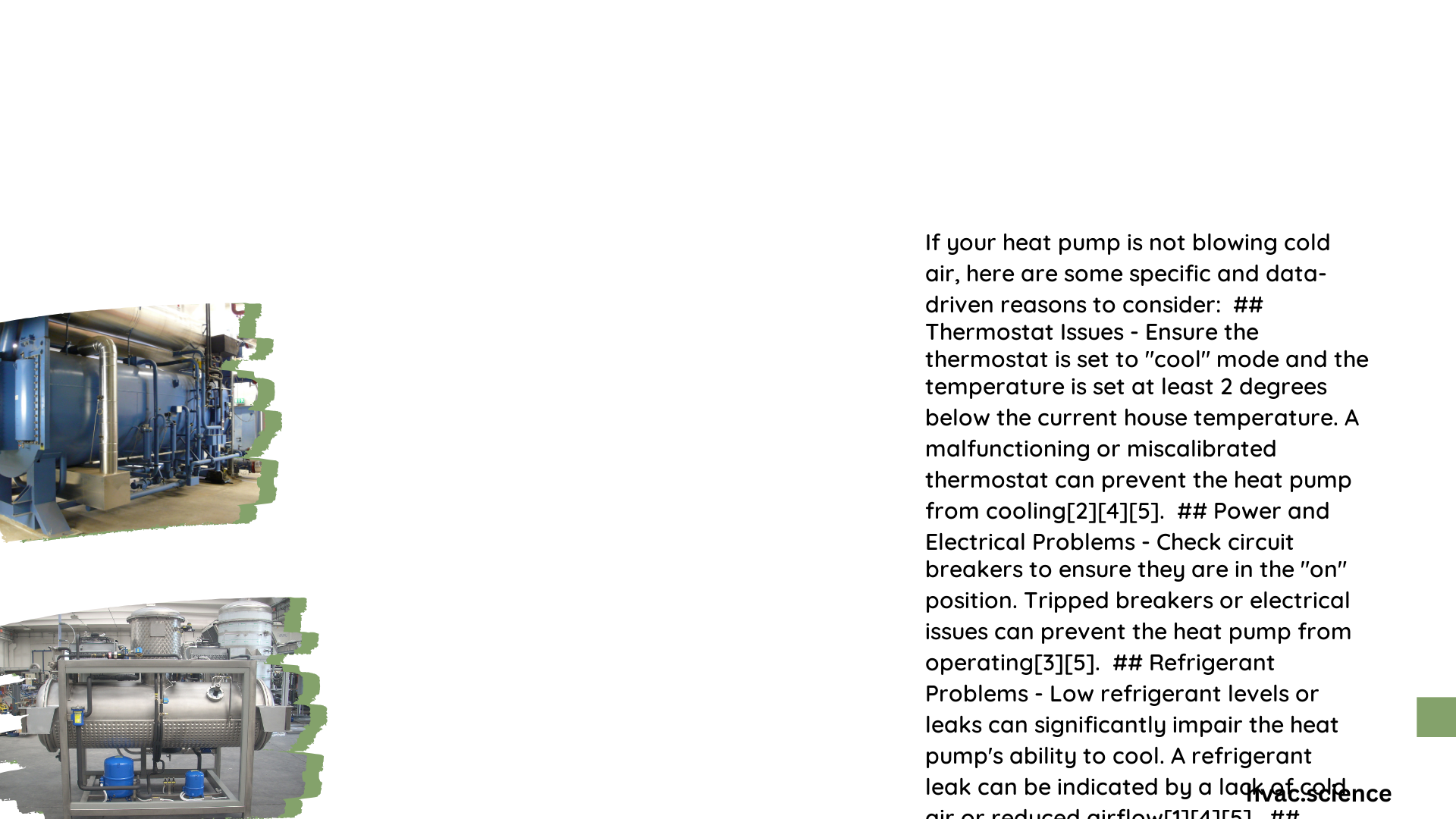A heat pump that isn’t blowing cold air can be frustrating, especially during hot summer months. This issue can stem from various factors, including airflow problems, thermostat settings, or refrigerant issues. Understanding these potential causes and knowing how to troubleshoot them can help restore your heat pump’s cooling function and maintain a comfortable indoor environment.
Why Is My Heat Pump Not Blowing Cold Air?
When your heat pump isn’t blowing cold air, it’s essential to identify the root cause. Here are some common reasons and solutions:
Is There an Airflow Problem?
Airflow issues are a frequent culprit when a heat pump fails to blow cold air. Here are some specific airflow-related problems to check:
- Dirty or Clogged Air Filter: A clogged filter restricts airflow, reducing cooling efficiency.
-
Solution: Check and replace the air filter every 1-3 months.
-
Blocked Vents or Ducts: Obstructions in vents or ducts can impede air circulation.
-
Solution: Inspect and clear any blockages in vents and ductwork.
-
Fan Motor Issues: A malfunctioning blower motor can prevent air circulation.
-
Solution: Ensure the fan is set to AUTO mode and check the circuit breaker.
-
Outdoor Unit Blockage: Debris around the outdoor unit can restrict airflow.
- Solution: Clear any vegetation, snow, or debris from around the outdoor unit.
Are the Temperature Settings Correct?
Incorrect thermostat settings can lead to cooling problems. Here’s what to check:
- Thermostat Mode: Ensure the thermostat is set to cooling mode.
- Temperature Setting: Set the temperature at least 2 degrees below the current room temperature.
- Thermostat Functionality: Verify that the thermostat is working correctly and not stuck in heating mode.
Could There Be a Refrigerant Issue?
Refrigerant problems can significantly impact your heat pump’s cooling ability:
- Low Refrigerant Charge: Insufficient refrigerant prevents proper cooling.
-
Solution: Have a professional test and recharge the system.
-
Refrigerant Leaks: Leaks can cause refrigerant levels to drop over time.
- Solution: Inspect for signs of leaks and have a professional repair and recharge the system.
How Can I Check for Airflow Problems?

To diagnose airflow issues, consider the following measurements and specifications:
What Should I Know About Duct Size?
While duct sizes vary, it’s crucial to ensure they’re properly sized for your heat pump system. Consult your owner’s manual or an HVAC professional for specific requirements.
How Do I Check Fan Speed?
Fan speed, measured in Cubic Feet per Minute (CFM), should match the manufacturer’s specifications. A typical residential heat pump might require 400-800 CFM per ton of cooling capacity, but this can vary.
How Often Should I Check the Air Filter?
Inspect the air filter monthly and replace or clean it every 1-3 months. A dirty filter can significantly reduce airflow and system efficiency.
What Should I Know About Refrigerant Levels?
Refrigerant levels are crucial for proper heat pump operation. Here’s what you need to know:
What Are the Specific Refrigerant Level Requirements?
Refrigerant levels vary by heat pump model and manufacturer. There’s no universal measurement, as it depends on the system’s design and capacity. A typical residential heat pump might require 2-5 pounds of refrigerant per ton of cooling capacity, but always refer to manufacturer specifications.
How Is Refrigerant Checked and Recharged?
Due to the complexities and potential dangers involved, refrigerant checking and recharging should only be performed by qualified HVAC technicians. The process typically involves:
- Professional inspection
- System shutdown
- Leak detection and repair
- Recharging according to manufacturer specifications
What Are the Recommended Temperature Settings?
Proper temperature settings are essential for optimal heat pump performance:
How Should I Set My Thermostat for Cooling?
- Set the thermostat to cooling mode.
- Adjust the temperature to at least 2 degrees below the current room temperature.
- Set the fan to AUTO mode for efficient airflow control.
How Do Temperature Settings Affect Airflow and Refrigerant Levels?
Correct temperature settings ensure the heat pump operates within its designed parameters, maintaining optimal airflow and refrigerant levels. Extreme settings can lead to inefficient operation and potential system issues.
By addressing these common causes and following the recommended troubleshooting steps, you can often resolve issues with a heat pump that isn’t blowing cold air. However, if problems persist, it’s advisable to consult a professional HVAC technician for a thorough diagnosis and repair.
